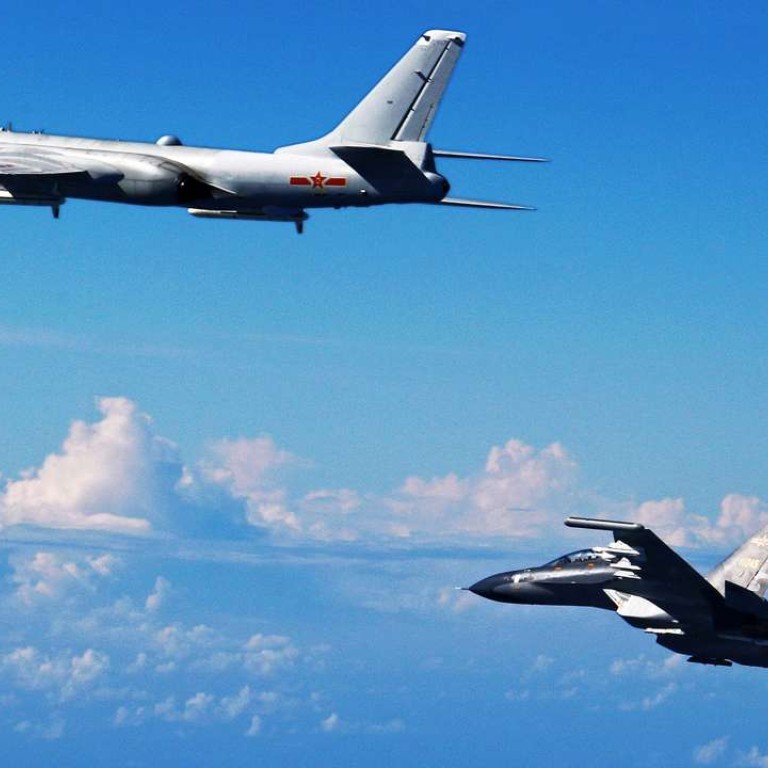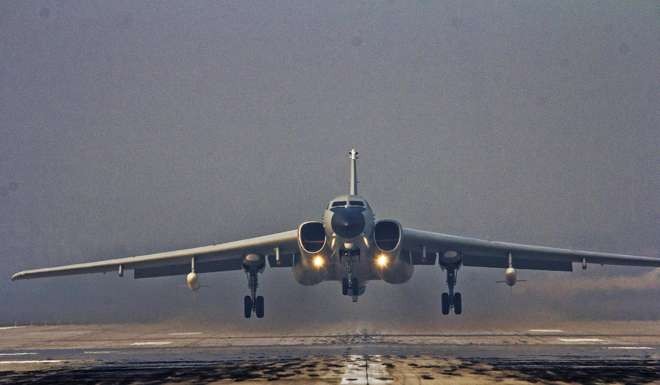
China’s massive Pacific air force drill just the start of even bigger shows of might against US, experts predict
The PLA Air Force’s unprecedented drills in the Western Pacific on Sunday are just the beginning, military observers say as they predict more large-scale exercises in the region in future.
The long-range drills and patrols – involving more than 40 aircraft from various teams – were to display China’s ability to counter US interference in the South China Sea, the analysts said.
Air force spokesman Shen Jinke said H-6K bombers, Su-30 fighters and air tankers conducted reconnaissance and early warning drills, simulated attacks on sea targets and carried out in-flight refuelling.
Air force spokesman Shen Jinke said H-6K bombers, Su-30 fighters and air tankers conducted reconnaissance and early warning drills, simulated attacks on sea targets and carried out in-flight refuelling.
It was the second drill in the region this month, and the sixth time the air force had flown over the so-called first island-chain blockade.
That term referred to islands and archipelagos that lay just beyond the East Asian coast, behind which the United States was trying to contain China, state media reported.
Japan’s Maritime Self-Defence Force scrambled fighter jets after discovering eight Chinese planes flying over the strait in a drill near Okinawa.
Song Zhongping, a Beijing-based military observer, said the exercises targeted not only Japan but the combined power of it and the United States, and that the US was Beijing’s ultimate rival.
The drill “aims to target the US naval base at Guam, which is the bridgehead for Washington to contain China in the region”.
Song said China believed the ongoing US exercise Valiant Shield, which kicked off on September 12 and involved some 22,000 troops, was also targeted at China.

Song said the distance involved in staging drills from China’s mainland to the Western Pacific was almost equal to that of sending jets from Hainan province to the southernmost parts of the South China Sea.
This suggested that the air force was capable of doing similar long-range drills in the contested waters, Song said.
Beijing-based naval expert Li Jie said the drill on Sunday proved that the air force could operate across the gamut of command, control, communications, intelligence, surveillance and reconnaissance systems that the US military used.
“The PLA Navy has already broken the first island-chain blockade and sailed into the Western Pacific many times,” Li said.
“In order to show the Chinese military’s joint operational achievements, it’s very likely that the air force, navy and other supporting forces like the rocket force will have joint exercises in the Western Pacific Ocean,” he said.
Video footage from state broadcaster CCTV showed that the aircraft taking part in the drill came from various military airports across China.
These included bases in Nanjing in Jiangsu province, Leiyang in Hunan and Wuhu in Anhui, as well as the secret air-force training base in remote western Gansu province, according to Macau-based military observer Antony Wong Dong.
He said the designation and serial numbers on the aircraft used in the drills showed that they involved the most types of warplanes yet seen, and that the exercises had a “deterrent effect” on countries involved in territorial disputes with China.

